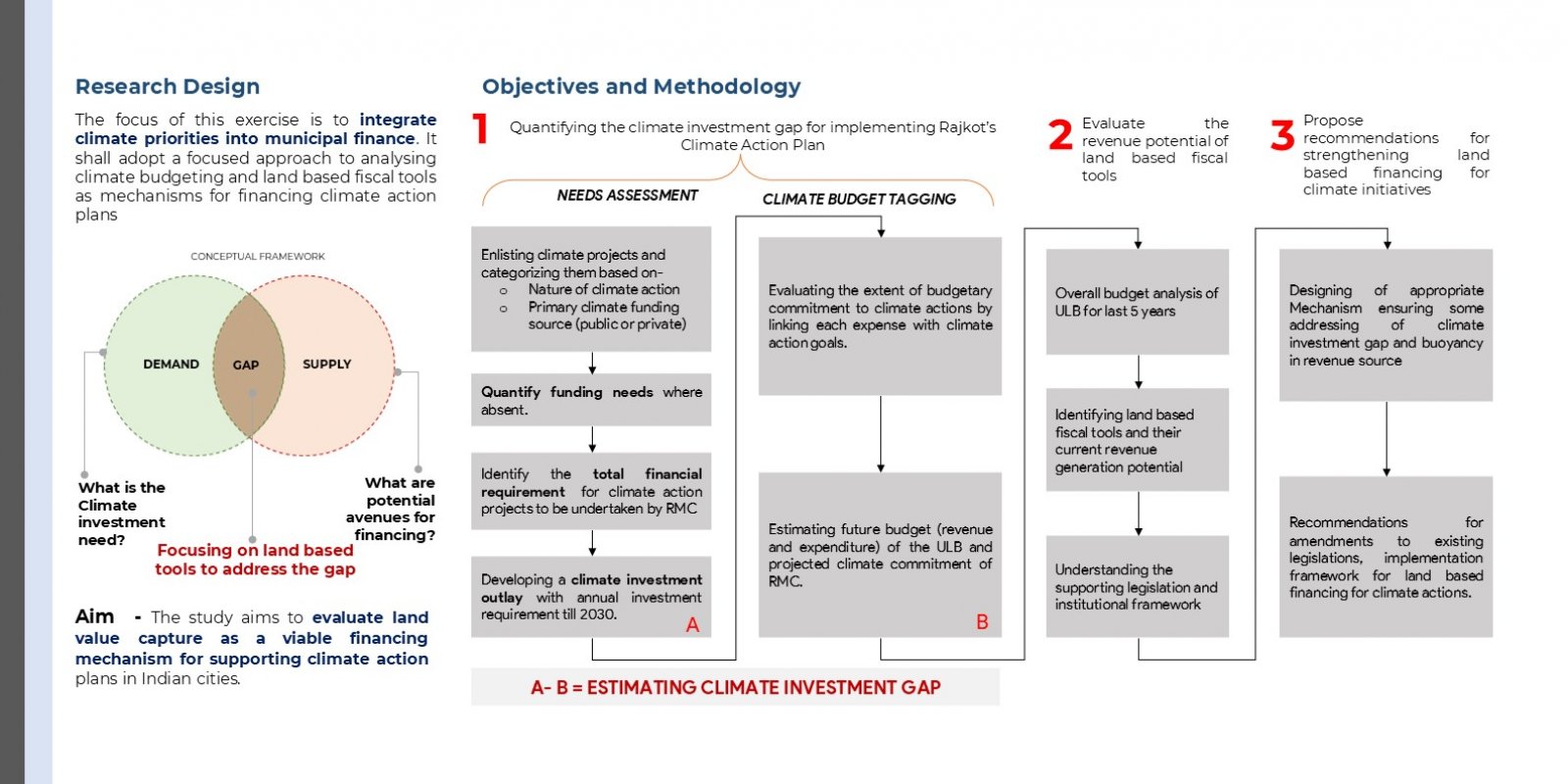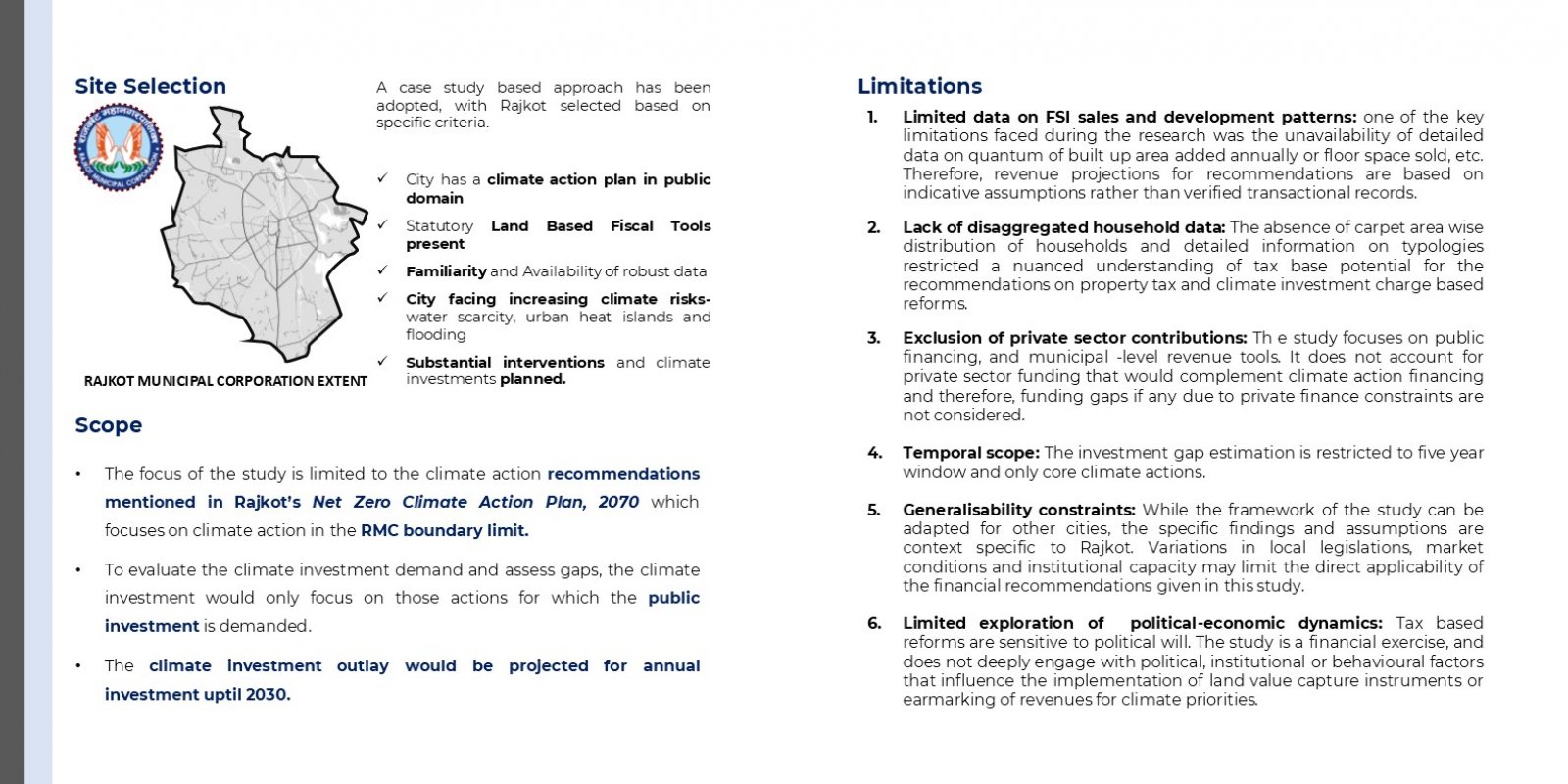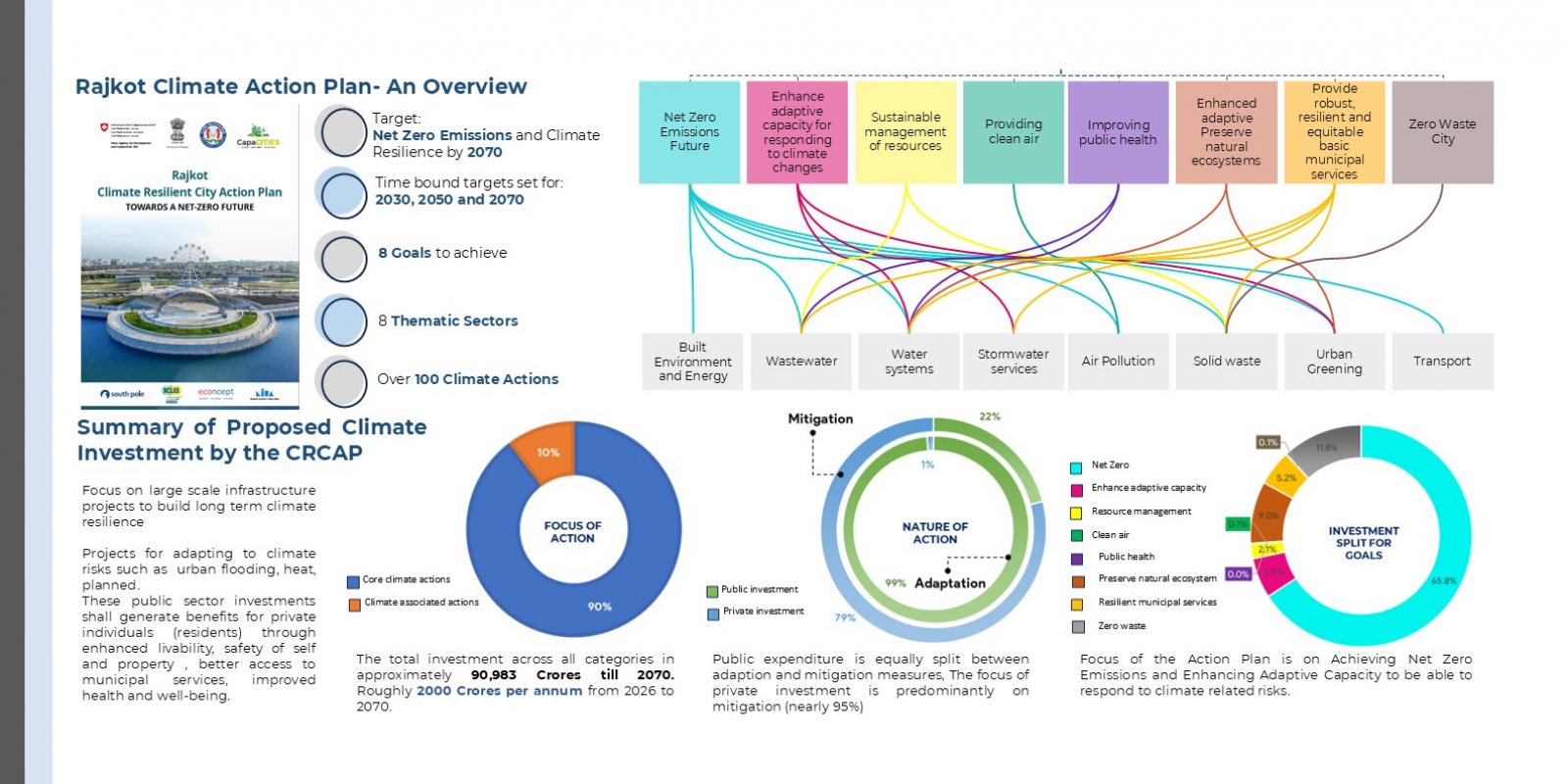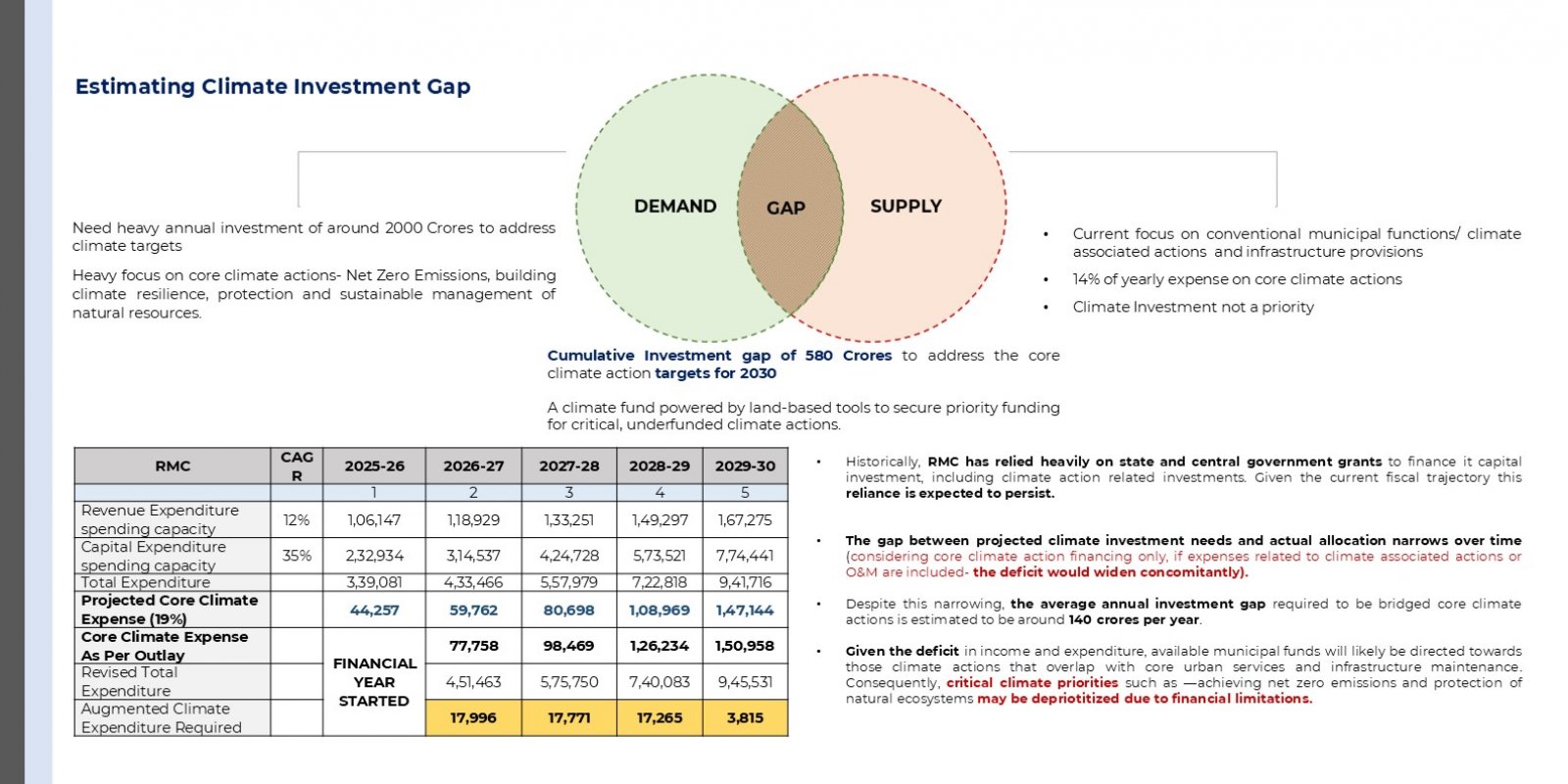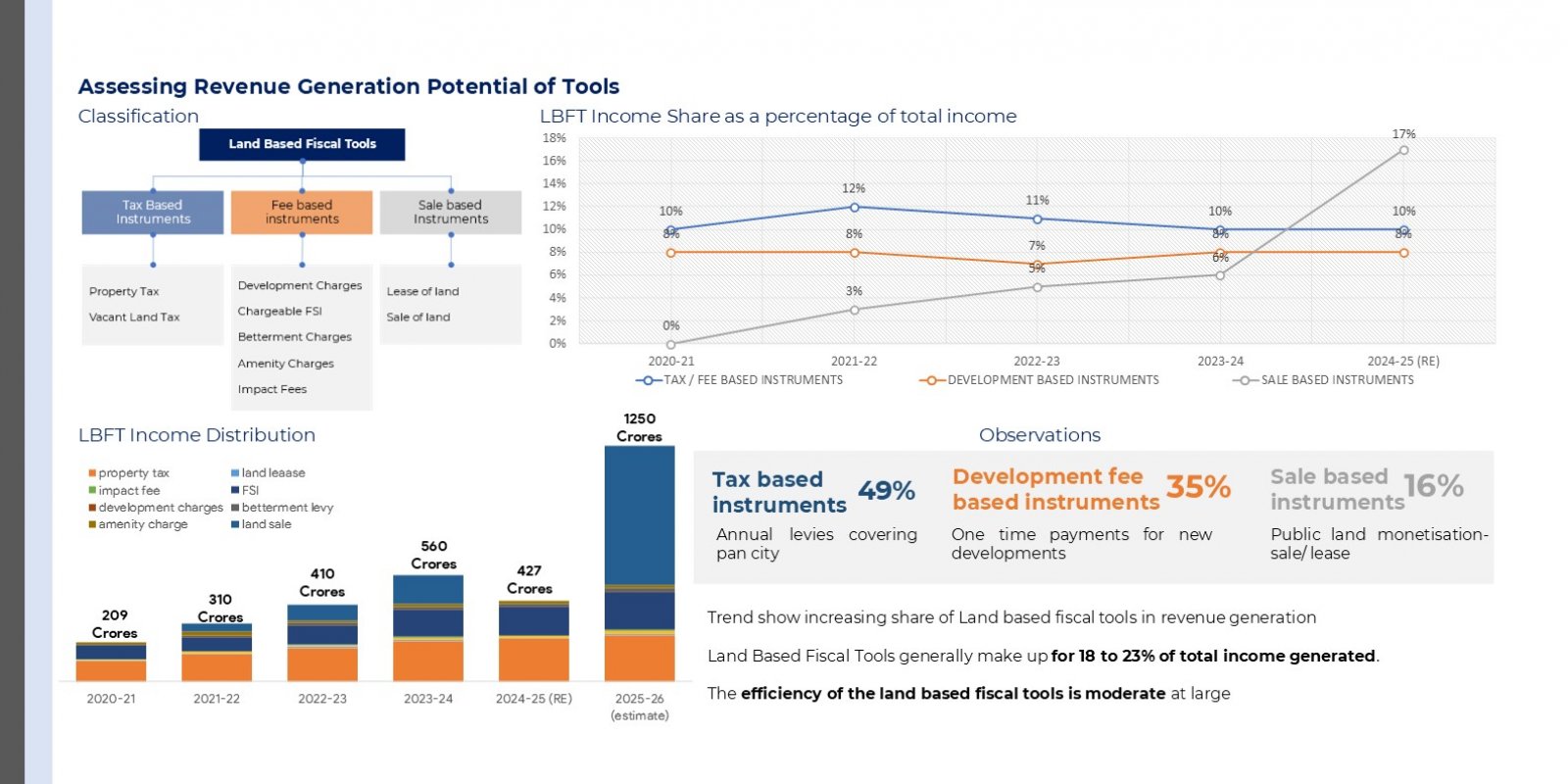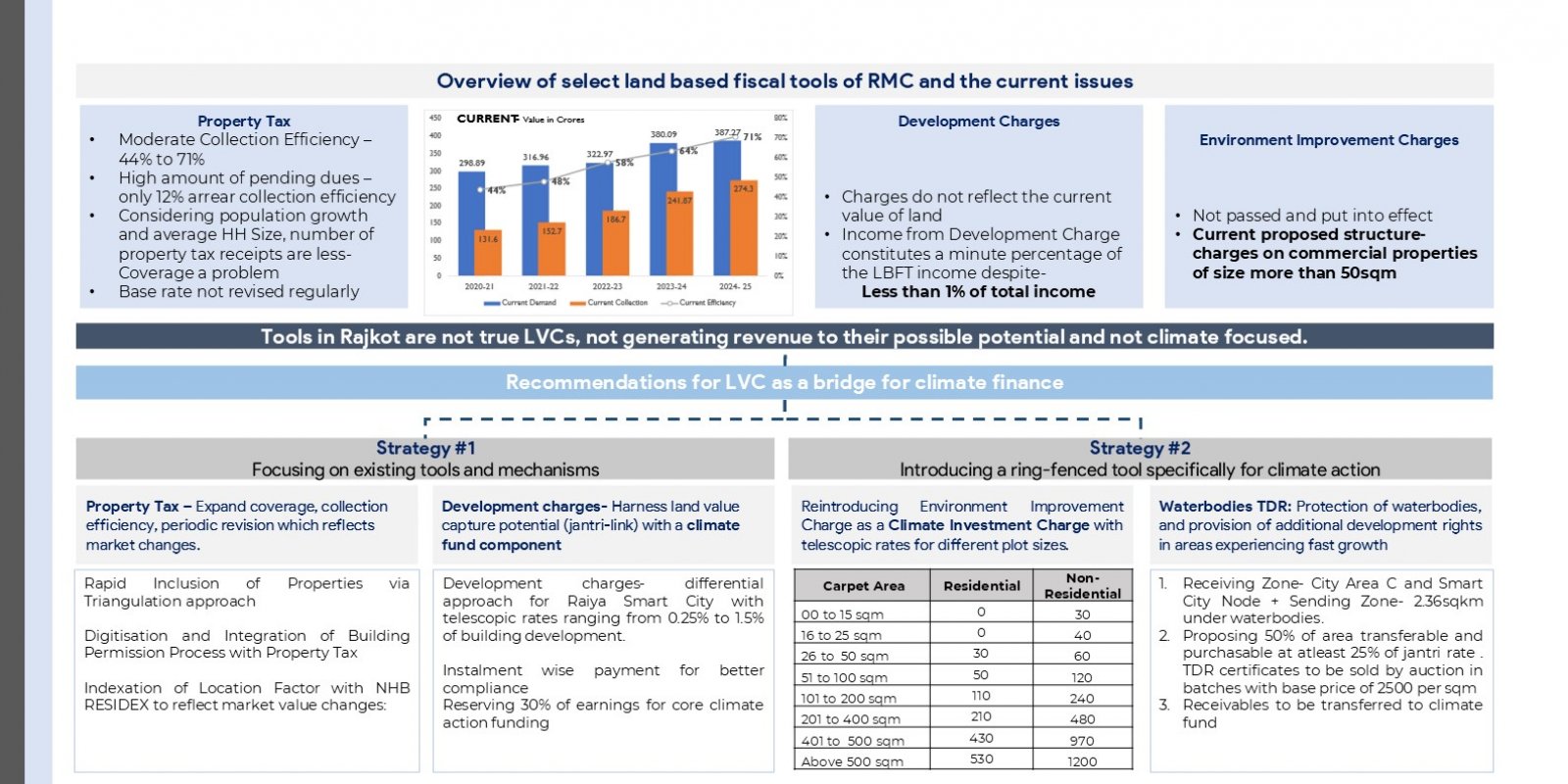Your browser is out-of-date!
For a richer surfing experience on our website, please update your browser. Update my browser now!
For a richer surfing experience on our website, please update your browser. Update my browser now!
This research explores how Land Value Capture (LVC) mechanisms can be leveraged to finance climate action in urban India, with Rajkot as a case study. The project involves assessing the investment needs for implementing Rajkot’s Climate Action Plan (target year: 2070) and analysing the municipality’s current public finance capacity to identify the climate investment gap. The objective is to equip RMC with actionable strategies to mobilize dedicated and sustainable finance streams for long-term climate resilience. The DRP work involves • Preparation of an Annual Climate Investment Plan (2025–2030) outlining sector-wise goals and aligning them with municipal budget allocations. • Evaluation of existing land-based fiscal tools used by the Urban Local Body (ULB). • Development of tailored recommendations to enhance municipal revenue through LVC instruments such as development charges, betterment levies, and premium FSI.


